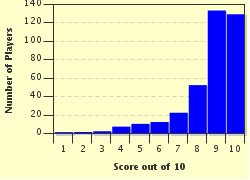Quiz Answer Key and Fun Facts
1. For something to burn, you need fuel and air. Which part of air is needed to sustain a fire?
2. For a fire to start, you need a third factor beyond air and fuel - which one?
3. Most fires release smoke which tends to rise upwards. Why does it do that?
4. Sometimes combustion can even take place without air. Why is this possible?
5. If a particularly fast combustion takes place in a tightly enclosed space, which of the following is often the result?
6. One visible sign of combustion is a flame. Flames can have many different colors, but which of these is the hottest? (It is the color that you would most associate with cold.)
7. Combustion also takes place in many everyday applications. Which of the following does NOT rely on combustion to function?
8. Sometimes engineers speak of an "internal combustion engine". This is a pretty big term for something you have surely seen before - what could they be talking about?
9. Fire extinguishers are used to stop an unwanted combustion - a damaging fire. Which of these would NOT be of use in fighting small fires?
10. If not controlled, fire is dangerous and kills people every day. What is the most common cause of death in fires (it is NOT burns)?
Source: Author
WesleyCrusher
This quiz was reviewed by FunTrivia editor
NatalieW before going online.
Any errors found in FunTrivia content are routinely corrected through our feedback system.


